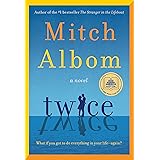Unlocking the Hidden Blueprint: How Acts, Scenes, and Beats Secretly Shape Every Story
Ever wondered how the wild chaos of your storytelling brain—bursting with vivid scenes, raw emotions, and nonlinear sparks—can be tamed into a compelling script or novel? It’s like trying to bottle a thunderstorm, right? Well, that’s exactly the tightrope walk every writer faces: transforming boundless, fifth-dimensional creative energy into a structured journey your readers can follow in good old, linear time. Having wrestled with this challenge myself during my Creative Writing Masters, I can tell you—it’s a thrilling but daunting dance between untamed imagination and rigorous form. So, how do you harness that explosive potential, turning it into kinetic energy that propels a protagonist through a memorable arc? Ready to crack open the formula that breathes life into stories and makes them irresistible? Let’s dive into the art of sculpting chaos into change. LEARN MORE

If stories are chaotic potential energy, scripts and novels are structured kinetic energy
My Creative Writing Masters program has had many ups and downs. One of the most profound ups was a lesson in storytelling that completely rewired my brain. It forged a bridge between the chaotic creativity of one half and the pattern-craving logic of the other.
As artists, we can lose ourselves to the sporadic, fragmented fun of the process. Bits of far bigger narratives manifest in a timeless, nonlinear void. A beautiful scene for which one song is suited perfectly for. A harrowing moment of heartache located somewhere in book three. A gut-wrenching instance of terrible fear just before the protagonist experiences glorious, series-ending triumph.
Our creative side isn’t tethered to or burdened by linear time. It is drawn only to freedom, expansion and all-consuming emotion. Things of this nature seldom obey a schedule.
This is where structure comes in. Structure in writing, just like structure in life, is formulaic. Mathematical. Stories are wild, explosive creatures that cannot be defined in their original state. The act of structuring makes them shareable. It turns them into scripts, screenplays and novels. Scripts, screenplays and novels have one goal and one goal only: to display a protagonist’s journey through change.
Let’s say you do have a story in which, by a distant and dreamy third installment, your protagonist must experience the most horrific heartbreak of their life. Since this moment excites you, write the scene. Write it as if the previous three books have already been published. Write it as if you already have a massive readership. Write it as if the rest of the work is already done.
You have the story. Now, you must condense it so that it may be conceived and shared in linear time. Your mind is fifth-dimensional. Somehow, you’ve got to make what it’s found third-dimensional.
To construct the most engaging piece possible, you’ll want to put your protagonist through the greatest possible change. A noble prince who turns into a slightly more noble prince isn’t all that interesting, but a noble prince who turns…



















